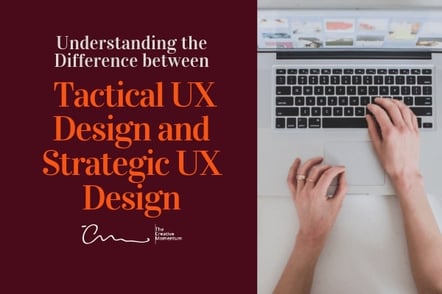
If you’re designing a website, you know that user experience (UX) is essential to your overall success. You want to create a website that doesn’t just attract traffic but engages visitors once they arrive, is intuitive to use, and ultimately encourages them to follow through on your CTA. But even though this is a general description of UX, you might be surprised to find that this is only scratching the surface when it comes to the design concept. In fact, UX can be further broken down into a number of additional subcategories, with tactical UX and strategic UX design being two popular schools of thought.
What’s the Difference Between Tactical and Strategic Design?
While both tactical and strategic design are essential sides of the same coin—developing an intuitive site that’s user-friendly—they are not interchangeable concepts. It can be hard to differentiate between the two methodologies because their definitions are murky at best. A quick Google search or a read through the leading “how to” UX explainer websites will leave you with your head spinning.
What is Tactical UX Design?
In short, tactical UX refers to implementing design elements to support short-term goals. A great example of this would be wanting to develop a website to drive engagement for a brand launch. Users must visit and sign up on your site in order to interact with your brand. You have a specific event in mind, and your website needs to perform to support those functionality objectives. The confusion over this concept stems from the fact that tactical design can serve as a component of other UX design methods.
What is Strategic UX Design?
Strategic UX refers to a more long-term process of web development. In this scenario, you’re building a website that you intend to continue tweaking for improved user experience over time. This type of website development timeline can be viewed as more fluid. And even though you might rebuild or relaunch over time, your goals aren’t limited by a hard deadline. While a website that’s built using tactical efforts can transition into a strategic process, the reverse does not hold true.
An Example of the Tactical-Strategic Design Parallel
The largest hallmark between tactical and strategic is the fact that tactical design is heavily motivated by finite resources. Whether it’s a lack of actual manpower, a tight budget, or having to launch a website within an aging platform, all of these are real constraints that require UX designers to create workable solutions to overcome them. But the caveat remains—this can become part of strategic design.
In our initial tactical design definition, we gave the example of a website that needs to go live on a specific date because of a product launch. So at a minimum, the finite resource is your timeline. Now you have to create a plan that prioritizes time management in order to successfully go live in time. That plan will require tactical UX to optimize a website that meets the brand’s needs within the limited time available. However, you’re not just designing a website for that one day.
After the launch, this site will still serve as a prime source for consumers to learn about your product, purchase, and interact with your brand. At this point, your site will still need to be maintained and optimized to stay agile and relevant to your audience. This ongoing course-correction and design improvements falls under strategic UX because now you are focused on long-term goals of connecting with your target audience.
This is probably one of the simplest explanations of tactical versus strategic UX design. However, for a more thorough breakdown of the two principles, this article offers an in-depth overview. And whether you find yourself in need of a UX optimized site while facing limited resources or not, just know that the team at The Creative Momentum knows how to bring your vision to life while leveraging tactical and strategic design concepts.


